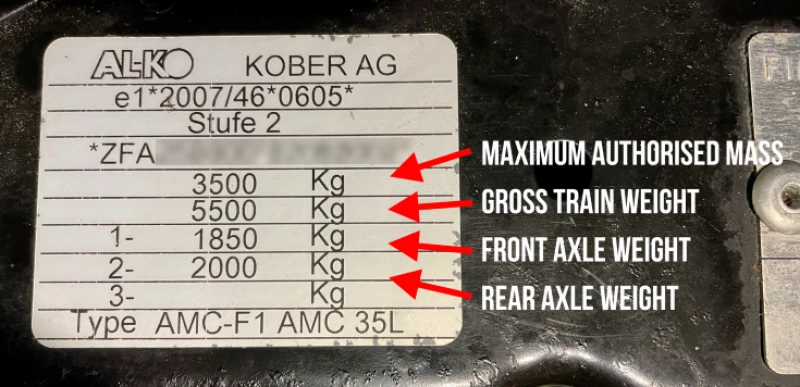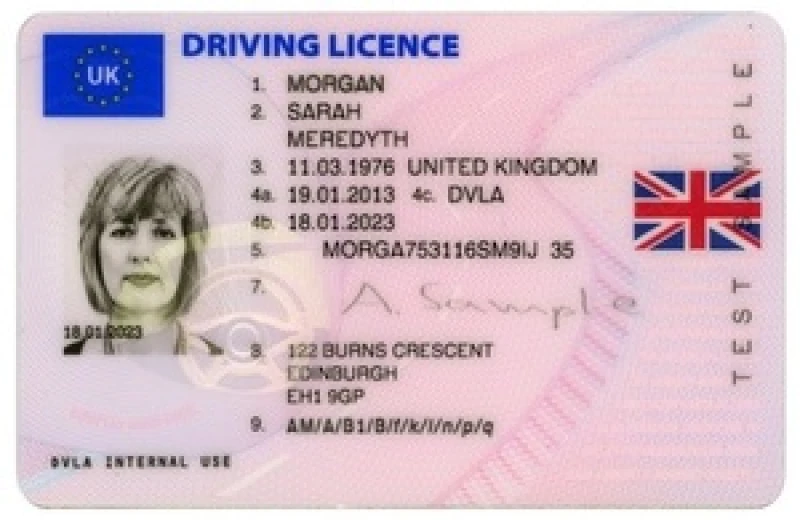Legal Requirements
Vehicle weight terminology
To understand motorhome weights properly we should be aware of the various terminology used. Annoyingly, many of the abbreviations and acronyms that have been used over the years sound different, but in some cases refer to the same value.

The motorhome weight plate
There are usually 2 weight plates on a motorhome. The first is usually under the bonnet, commonly referred to as the VIN plate, and the second is usually held within the bodywork of the motorhome. The second weight plate is installed by the coach builder. It will have the term “STUFE 2” printed clearly on the plate. The values on this plate will override the values on the vehicle’s VIN plate. So, for our purposes, this is the weight plate we need to pay attention to.
MAM
The maximum authorised mass or MAM is the new designation for Gross Vehicle Weight (GVW). This is the vehicle’s weight plus the maximum load it can carry. This is usually the first line on the weight plate.
Gross train weight
Usually the second line on a weight plate, the Gross train weight is the MAM of the motorhome plus what it is able to tow. This may also be referred to as the Gross Combination Weight (GCW) on some older vehicles.
Axle weights
On lines 3 and 4 of the weight plate will be the maximum weights allowed over the front and rear axles. Line 3 refers to the front axle and line 4 refers to the rear. These values will be higher than the MAM of the vehicle. This is to allow various loading combinations of the vehicle. For example, if you load a 1-tonne pallet at the rear of the vehicle, the weight will weigh more on the rear axle, and very little on the front as opposed to loading the same weight through a side door that will add weight on both front and rear evenly. In the event that a motorhome has twin rear axles, this value will be displayed on line 5 of the weight plate.
Licence categories
Motorhomes that weigh between 3,500Kg (MAM) and 7,500Kg (MAM) will require the driver to have a C1 category on their UK full driving licence. If you passed your driving test before 1st January 1997, it’s likely you will have the C1 category on your driving licence. Motorhomes that are over 7,500Kg will require a category C licence. Motorhomes that exceed 3,500Kg are classified as Private HGV by the DVLA and will cost more on road tax. The good news is if the motorhome weighs 3,500Kg or less a standard UK driving licence can be used.
Our range of Bailey Adamo motorhomes is a great example of motorhomes that weigh 3,500kg or less.

Up-plating
Thankfully many motorhome manufacturers these days adjust their motorhomes to be 3,500kg or less to allow drivers with a standard UK full licence to drive legally. The downside is that this can remove some of the payload allocations. The payload is how much weight you can add to the vehicle. For example, clothes, food and accessories. If you have category C1 or C on your licence you can have the motorhome up-plated to gain more payload allocation. In some instances, this can be as much as 700Kg. This is a paper exercise and will require no modification to the motorhome, you will be given a new weight plate for the vehicle and a new V5 to show the newly available payload.
If you do not have C, or C1 on your licence you can sit extra driving tests to gain this entitlement. To understand what you can drive check the Gov.uk site or of course please feel free to ask our sales teams at Swindon, Oxford or Reading who will be happy to help
